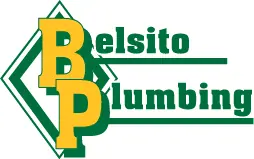Water Filtration Systems
Phoenix, AZ
Water Filtration Systems Phoenix, AZ
Water purification filtration technology has advanced a great deal in the last couple of decades.
Dealing With Hard Water
Hard water is a common problem in many households across the United States. If you’ve ever had to clean soap scum off of shower walls, had water scale clog up your pipes, or your freezer has produced milky, cloudy ice cubes, you have experienced some of the common problems associated with hard water.
What is Hard Water?
Put simply, hard water is water that has a high mineral content. The minerals in the water prevent soap from sudsing properly, leave a white film or residue behind, and can result in damage to water heaters. A water softener is often all that is needed to fix hard water problems.
How Water Softeners Work
Salt is one of the main components of a water softener and must be resupplied in order for the system to continue working correctly. So just how does a water softener work? In the simplest terms, hard water passes through a filter that contains negatively charged resin (plastic) beads. The resin beads attract and filter out calcium and magnesium minerals from the water – the two main culprits of hard water.

Family Owned & Operated

Book Online

Reviews & Testimonials
Reverse Osmosis: What It Is and How It Works
Reverse osmosis (RO) is the process of deionizing or demineralizing water. It is done by pushing water under pressure using a semi-permeable reverse osmosis membrane. Considered as one of the most effective water filtration methods, it helps ensure you will enjoy great-tasting and clean water at all times.
Reverse osmosis works by removing contaminants from unfiltered water and forcing it through a semipermeable membrane. To ensure you have clean drinking water, water will flow from the concentrated side (more contaminants) of the membrane to the less concentrated side (fewer contaminants).
Reverse Osmosis Vs Traditional Filtration
The membrane’s power and presence make reverse osmosis filtration different from conventional filtration techniques. Unlike the traditional ones, the RO system’s membrane allows a more thorough filtration level, where both visible and invisible contaminants are reduced significantly.
Contaminants Removed by RO Filters
The following contaminants are reduced when they pass through the RO filtration process:
- PFAS (forever chemicals)
- Sediment (silt, sand, and dirt)
- Lead
- Dissolved solids
- Chemicals
- Microbial cysts
- Volatile organic compounds (VOCs)
- Water Filtration Systems Phoenix






The Benefits of RO System Installation
In the United States, nearly two million Americans don’t have access to safe drinking water. Another 40 percent filter their tap water at home. Both statistics highlight the importance of water filtration systems.
While many towns and cities already have reverse osmosis systems for their municipal water, many homeowners are investing in reverse osmosis water systems for their households as additional filtration.
Water Filtration Systems Phoenix
Below are some of the notable benefits of RO installation:
IT FILTERS NEARLY ALL CONTAMINANTS
Compared to other water filtration systems, RO is considered one of the most effective in eliminating contaminants. Amazingly, residential-grade reverse filters can eliminate up to 99 percent of the asbestos and lead. It also helps remove other additional contaminants.
Even more impressive is RO systems have ended water boil advisories in some communities worldwide by treating drinking water safely and effectively. RO’s filter membrane can also eliminate dissolved minerals and substances from water because it strips water down to the most basic molecules when it passes through.
MINERAL-LESS WATER ARE IDEAL FOR CERTAIN USES
Even if you already have clean tap water, you can still benefit from water filtered using RO. Case in point: some chefs have observed that water filtered through RO makes food taste better since it has no minerals like fluoride.
If you have a home aquarium, investing in a reverse osmosis system would be ideal for providing your aquatic pets with clean and pure water devoid of minerals and harmful contaminants.
For Water Filtration Systems Phoenix-Wide Contact Us Today
PROVIDES CLEAN AND REFRESHING WATER ON DEMAND
Unlike distillation, reverse osmosis won’t require considerable input from users. This means you won’t have to refill the tank to keep up with your needs. RO is directly connected to your faucet, providing clean, contaminant-free drinking water on demand.
IT IS SAFER THAN BOTTLED WATER AND MORE ENVIRONMENTALLY FRIENDLY
Compared to bottled water, reverse osmosis is considered a more environmentally friendly and safer alternative. While there is a tendency for RO systems to waste some water, it is still better than water bottles polluting and filling up landfills.
ENERGY-EFFICIENT OPTION
Surprisingly, reverse osmosis systems don’t use electricity despite their power and efficiency. This is in stark contrast to other options like distillation which requires heat and electricity.
RO CAN SAVE YOU MONEY
RO can reduce your living costs substantially. If you are used to using bottled water, you will be surprised by how easy and cost-effective an RO system can be. Savings can range from hundred to thousand of dollars annually, depending on how much water you use and consume.
Water Filtration systems Phoenix
If you’re in Phoenix and concerned about the quality of your tap water, Belsito Plumbing has the solution for you – Water Filtration Systems Phoenix. Our cutting-edge water filtration systems are designed to provide you with clean and healthy water, free from impurities and contaminants.
Water filtration systems Phoenix AZ are a great way to improve the quality of your tap water. They can remove impurities such as chlorine, sediment, and heavy metals, which can make your water taste better and healthier. There are many different types of water filtration systems available, so you can choose one that fits your specific needs and budget.
Some of the benefits of using a water filtration system include:
* Improved taste and odor: Water filtration systems can remove impurities that can make your water taste bad or have a strong odor.
* Healthier water: Water filtration systems can remove harmful contaminants such as chlorine, lead, and arsenic, which can improve your health.
* More versatile: Water filtration systems can be used for a variety of purposes, such as drinking, cooking, and bathing.
* Cost-effective: Water filtration systems can save you money in the long run by reducing the need to purchase bottled water.
If you’re looking for a way to improve the quality of your tap water, a water filtration system is a great option. There are many different types of systems available, so you can choose one that fits your specific needs and budget.
Water filtration systems Phoenix


